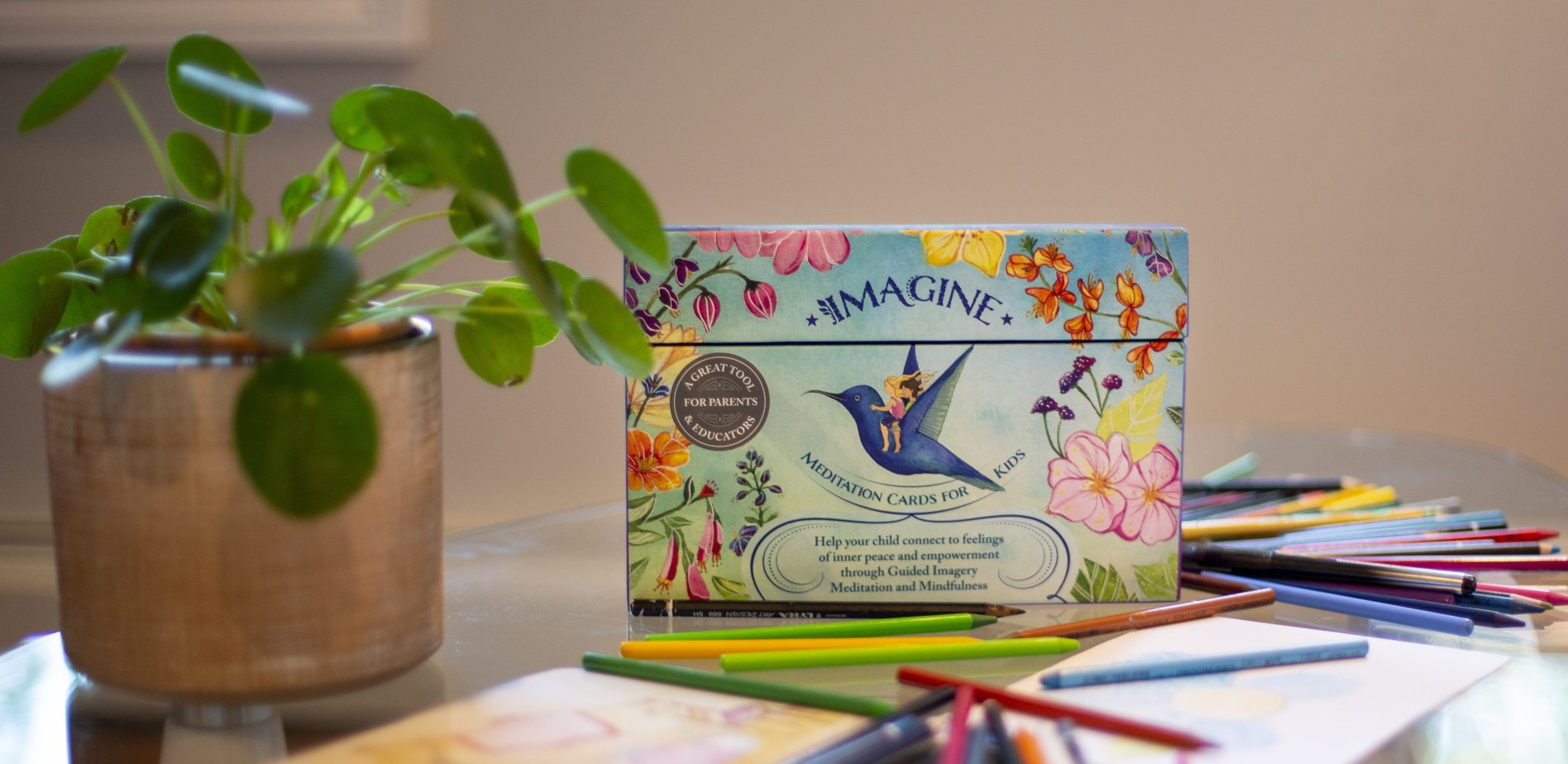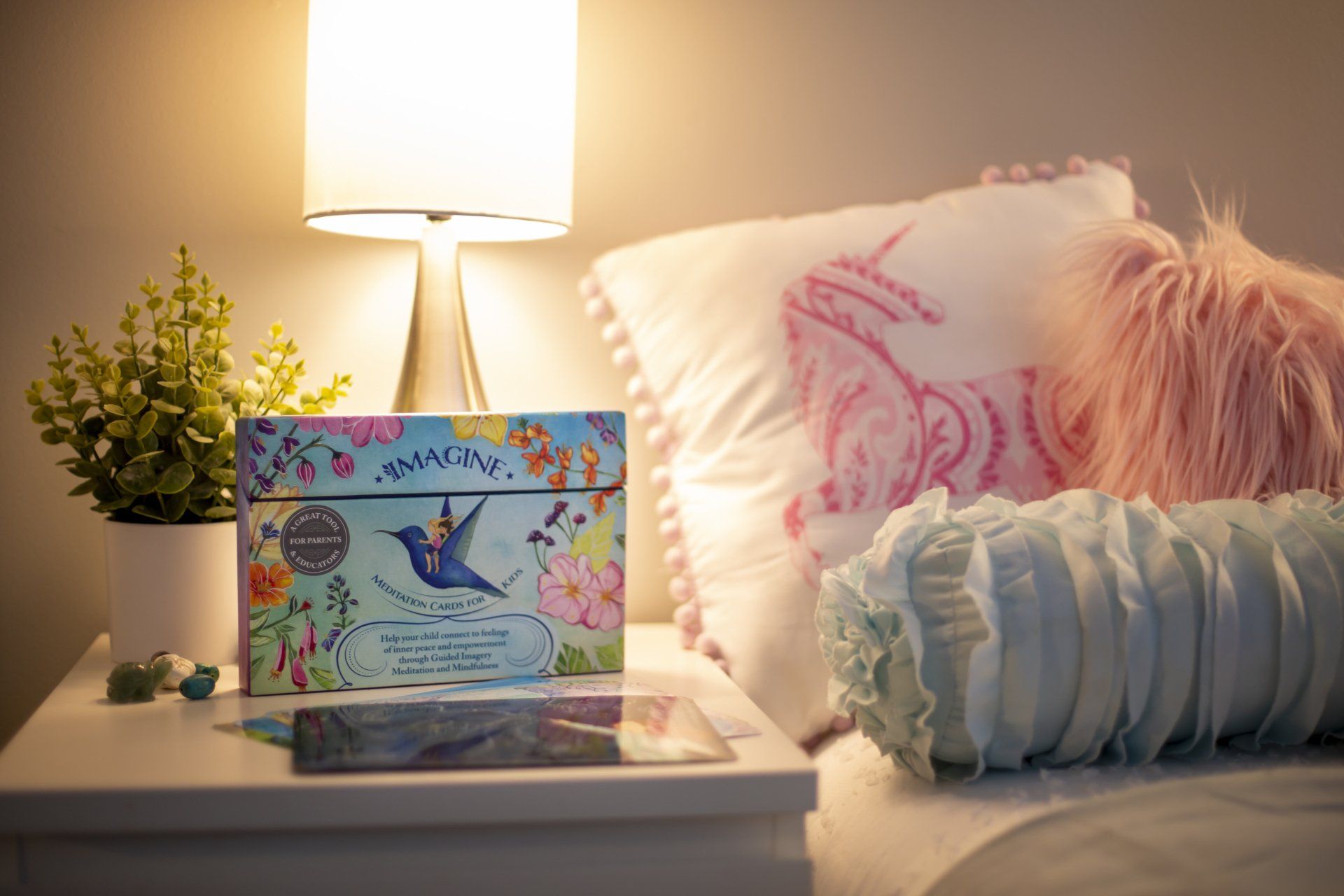The Power of Guided Imagery for Kids
Meirav Tamir • December 9, 2019
The power of choosing your thoughts
I just really want to spread the good news. As a mother of 3 teenagers and a holistic practitioner working with adults and kids, I often see how our kids get stressed over misleading concepts and beliefs that just don’t serve them in any good way. I wish for kids to know that if they add a component of choosing good thoughts into their lives, everything can look much better and happier. This means being active about feeling good, and that is such a powerful message for the young generation. One of the easiest and fastest ways to add good feeling thoughts is by Guided Imagery, and I will explain more shortly.
Stepping out of the reactive mode
Kids are used to being in a reactive mode, they are not the decision makers of most aspects of their lives. They are expected to follow instructions, follow the rules, do as they’re told. Boundaries do give them an important sense of security that helps them navigate their way through life. But, we also want to teach them about making good choices, and by this we encourage them to step into the empowered version of themselves.
The world is more and more overwhelming
Today’s kids are growing in a world that is more overwhelming than ever before. They are smarter, busier, more sophisticated. Just as an example, try comparing the amount of sounds you heard as a child, to the different sounds today’s kids hear every day. The number of phones in one house, each with its own notification sounds, emails, texts. The games they play are more complex, sounds, colors, virtual reality, everything going fast.
Why would kids get stressed? It’s not that they need to pay the bills
We understand today that stress is not something you get only when you grow older. Kids are experiencing stress from a very young age and on a daily basis. They may not be all aware of it, they may not know how to say it in words. But you can hear so many kids complaining about chronic aches (stomachaches, headaches), lack of energy, so many kids don’t do well on school tests even though they know the material. Going to sleep problems, ticking, impatience, focus difficulties, mood swings. All these are influenced by levels of stress (read some more about childhood stress).
How can we help?
First thing - set a good example
As I see it, it is our job to offer our kids positive ways to handle stress. This has to begin by showing them a good personal example of how we deal with everything going on. Our kids are natural observers
and they pick up our ways, consciously and in their subconscious minds.
Find ways to add good feeling vibes into your day-to-day
By talking to our kids we can help them learn to acknowledge
when they are experiencing stress. The next thing would be what they can actively do
about it. Stress has a tendency to accumulate, and we want to be more active about releasing it in positive ways. This can be anything that replaces the stressed state of mind with a positive one, doing anything that would turn on a ‘feel good mode’.
As we’re usually not on a continuous fun vacation, and not planning on moving into the nearest amusement park, we’re looking for easy and fast ways to simply relax and feel good anywhere we are.
Why Guided Imagery is so great
A great way to help kids reduce and release stress are Guided Imagery meditations that can replace stress and negative emotions with good, happy, calm and empowering thoughts and feelings. It has been shown that our brain can only focus on one thing at a time. This means that in the wonderful moments we focus on positive thoughts and emotions, we just can’t think about anything else. This has a soothing and relaxing effect that we can also feel in our body.
From my experience I can attest that the effect of Guided Imagery is immediate!
This means that the good and happy environment we can introduce a kid to through his own imagination could be a great tool
for him to use whenever he or she are stressed, whether it is before a school test, going to the dentist, a sports match/game, for many kids it’s social issues, and so on.
Reducing the momentum of stressors
Replacing stressful thoughts with positive ones doesn’t directly address the matters that caused the stress. It is more about reducing the attention that is given to the stressors
and at the same time indirectly strengthening emotional resilience. After this has been introduced to a child in a joyful way, that could enable an easier access to further address the specific stress matter, either by talking about it and processing it together or by professional help if needed.
What’s in the Imagine Mediation Cards for Kids activity
The Guided Imagery meditations in my Mindfulness cards offer relaxing, positive, happy, empowering and peaceful thoughts. The texts illustrate the senses and make the imaginative experience feel more real. They enable an immediate calm sensation in the body and mind, and by using them regularly this wonderful calm feeling can grow with every kid’s personal likings brought further into the imaginative picture.
So, turn on the ‘feel good button’!
Helping our kids make a habit of dedicating some time to turn on the ‘feel good button’ can really benefit them not only today, but makes an incredible skill for life.
The Imagine Blog

In my last blog I discussed the everyday challenge of going to sleep and how a simple bedtime routine can be a HUGE help. So now a little more into detail with these great ways to make it work! Phase One – Taking Care of the Body Try dedicating the first 10 minutes of the routine to basic actions that prepare the body for hopping into bed, such as brushing teeth, getting into pjs, and snagging a glass of water. Do your best to make sure these happen at about the same time and, if possible, in the same order. And don’t forget to include a cut-off time for electronics – at least 30 minutes before it’s time to fall asleep. Blue light has been shown to limit production of melatonin, a hormone that’s key to maintaining a healthy sleep cycle. Avoiding electronics right before bedtime will help kids fall asleep faster and wake up feeling rested. Once all of this is out of the way, you can move on to the next phase of the routine. Phase Two – Taking Care of the Heart and Mind The second phase, in my opinion, is the best part of the routine, and it actually offers a priceless opportunity for you to create a 100% nurturing experience for your kids . In fact, the content you pour into the next 10 minutes or so will have a life-long effect on them. There are a ton of different things you can do to treasure your time together. You can… Read a book Take turns saying things you’re grateful for Talk about the good things that happened that day Sing a song or say a prayer Say goodnight to family members, friends, the moon, the stars, the birds, or even the trees outside The Guided Imagery Meditation Option If you haven’t before, you could also give guided imagery meditation a try! You might be surprised how fun and calming it is to visualize a pleasant scene as if you’re part of it. There are many different types of meditation you can do depending on your preference: breathing practice, progressive relaxation, mindfulness meditation focused on the five senses, landscape visualization, self-esteem exercises… And the list goes on! Get started with one of my guided imagery meditation scripts: The Protection Bubble . Then you can branch out based on your success. (Many of my customers swear by bedtime meditation!) Keep it short so bedtime remains as consistent as possible, but don’t be in a hurry. Above all, make sure to be present. These are some of life’s most precious moments, so just relax into the bonding experience. The more you give, the more you’ll receive during these positive, soothing 10 minutes. Oh, and try not to blink… They’ll be all grown-up so fast! :)

“My kids always go to sleep so nice and easy!” said no parent ever. Getting your kids to go to sleep every night can be quite difficult, wouldn’t you agree? When my kids were young, I used to feel like I could fall asleep a hundred times before they ever did. And by the time the house was quiet, I was running on fumes. The Challenge – Encouraging the Kids to Sleep Unfortunately, falling asleep is not something that children can do on command, and it can get frustrating for all parties involved when they struggle with bedtime. The good news is that following a regular bedtime routine can turn that difficulty into willingness and even, dare I say, anticipation. Not only does a solid routine help to bring each day to a close in a positive way, but it also contributes to better sleep at night. This will have a great impact on your children’s health and well-being, not to mention your own... Still skeptical that it’s even possible? Perhaps that’s because you’ve never given guided meditation a try. ;) But before we get into that, let’s talk a little bit about the basics of bedtime. The Road to Success – Creating a 20-minute Bedtime Routine All good bedtime routines are built on a few similar and repetitive activities that occur every night at around the same time. But making the routine predictable does not mean it has to be dull (even though that can help with the process of winding down). The magic lies in creating a familiar and foreseeable space that kids associate with going to sleep. This provides young, active kids with a sense of security that gradually allows them to let go of the day and welcome a good night. Best of all, a bedtime routine doesn’t need to be long! About 20 minutes will do for a soft landing :) In my next blog - an easy two-phase process for a successful and fun bedtime routine.

“ I am smart and capable. I am kind. I am confident. ” Could something so simple actually work? Absolutely, yes! And when it comes to managing thoughts and feelings, it doesn’t get much easier than positive affirmations. What Are Positive Affirmations Positive affirmations are simple, short sentences with motivating or reassuring content that you can repeat to yourself in order to improve your mood or mindset. An easy yet powerful stress management tool, positive affirmations can be applied to any aspect of life to increase your confidence and help you feel good. When used often enough, they can have a real and lasting effect on the way you naturally think and behave. Tips to Maximize Your Affirmations Say the words “I am” in your positive affirmations. Doing so helps to create a more favorable state of mind – one in which you feel connected to the emotions you want to promote. Focus on the present. Sticking to present-tense statements makes them feel more real and attainable. There’s no need to worry about whether the affirmation will come true because you’re telling yourself it already is. Be specific about your wording. Statements that affirm the feelings you want, such as “I am courageous,” are more impactful than statements that negate your current feelings, like “I am not scared.” Using Positive Affirmations With Kids The wonderful thing about positive affirmations is that there is no limit to their usefulness – especially when it comes to kids. Kids encounter so many different situations each day that test their skills and emotions. Here are just a few examples of times when you can try positive affirmations with your child: First thing in the morning, to start each day with a positive mindset At bedtime, to ease their transition to a restful sleep When facing a test at school or any other kind of personal challenge When feeling an overwhelming emotion, such as stress, anger, or sadness What Positive Affirmations Are Not Positive affirmations are a great tool to train the mind toward positive thinking and emotional regulation. But it is worth noting that all emotions are valid and serve a purpose. Kids should know that it is absolutely OK to feel whatever emotion they are feeling. It’s OK to be sad, angry or stressed, and it is OK to feel overwhelmed. Positive affirmations are not a tool to erase negative feelings altogether, since there are times when those emotions are healthy and necessary. This message can be especially helpful to kids, who tend to see things in black and white. That said, positive affirmations are great any time a person decides they’d like to transition to a new mindset. So next time you or your child feel the need to turn things around, give these tips a try. Sometimes, all it takes is a simple “I am OK right now.”
